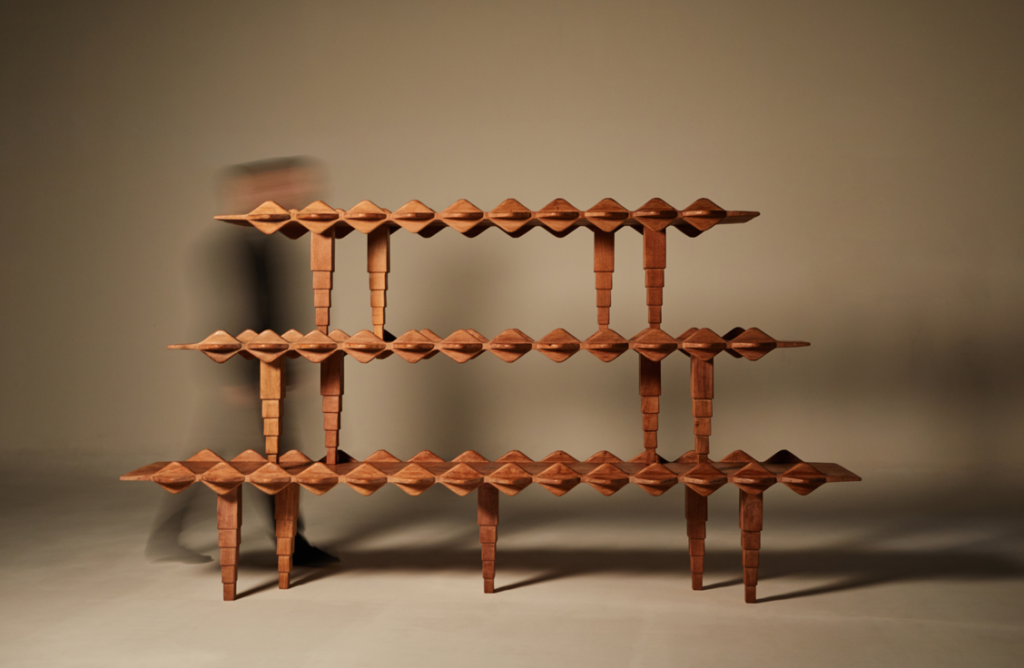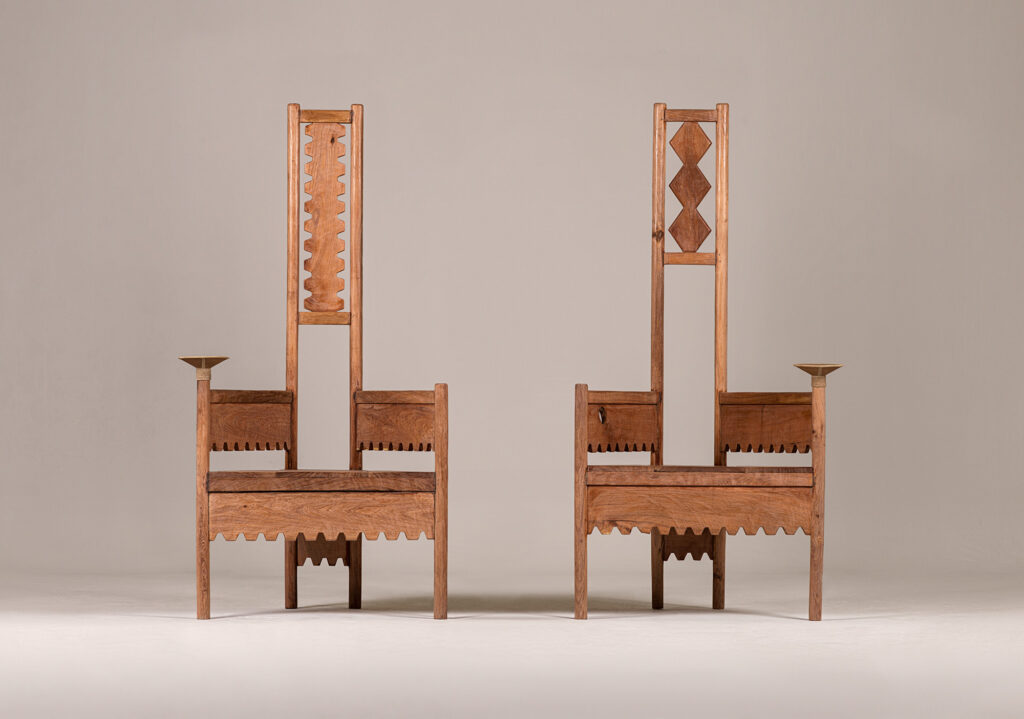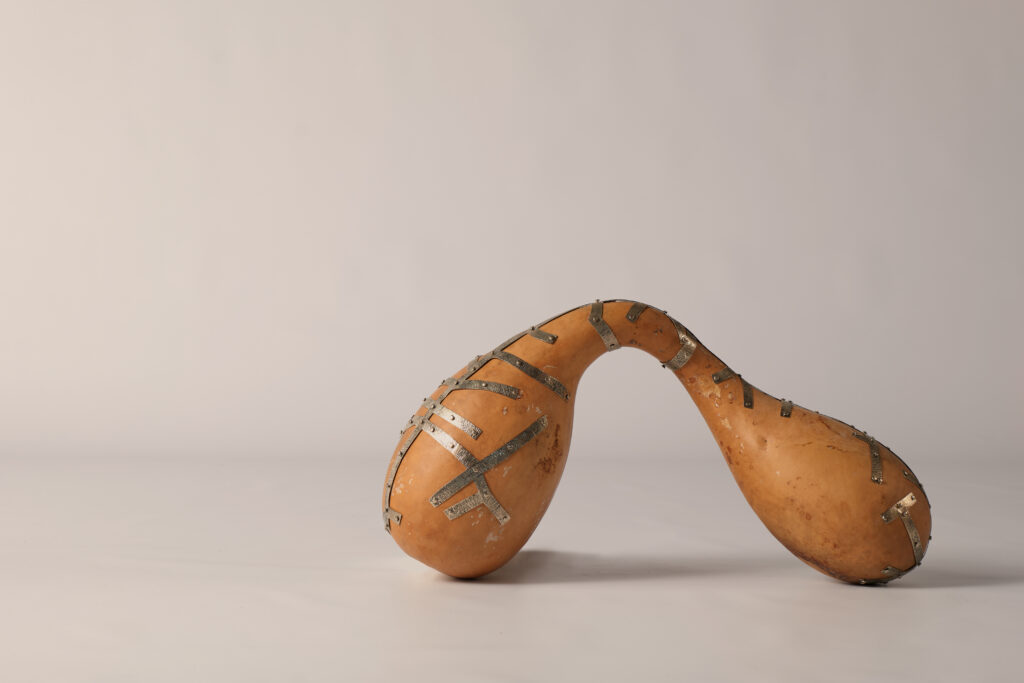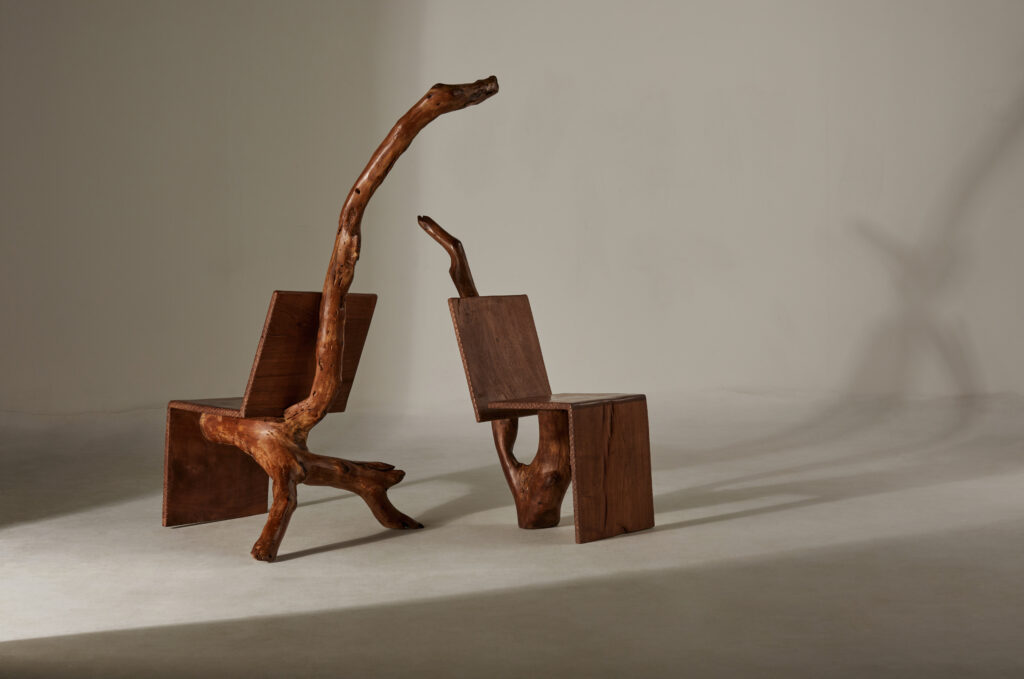
“For the last fifteen years,” wrote Argentinian designer Cristián Mohaded at the opening of the catalogue of his recent retrospective at the Museo Nacional de Arte Decorativo in Buenos Aires, “I have attempted to create a specific way of conceiving and producing design that brings to the surface the potential that lies buried in Argentina’s land and culture.” Since founding his studio in 2011, he has become the ambassador of Argentina in the world of contemporary design, constantly capturing its locality, traditions, and identity. He knows contemporary design well. He knows that in the 21st century, ‘good design’ is not measured by functionality but rather by other values, narratives, and personal expressions, and that today, emotional dimensions are the luxury of design. Mohaded was my guest this week in Furniture Design: Then and Now, the series I host in collaboration with Design Miami.
In a time when authenticity, memory, and personal connections are valued more than perhaps ever before, when crafts have become integral to the best design of today, and when narratives and identities play a central role in constructing design culture, the work of Cristián Mohaded cannot be more relevant. He was born in 1980 in the region of Catamarca, in the Northwest Argentina, which he refers to as his main inspiration and identity. His recent collection and installation for Loro Piana Interiors, showcased at Milan Design Week last year, was inspired by the landscape of the Andes, which he experienced growing up, bringing the Argentinian narrative to Italy and making endless headlines. When it comes to art furniture, that aspect of his work gets even stronger expression.
Since exhibiting his work globally and presenting his early furniture at Design Miami in 2018, Mohaded immediately attracted the attention of the design community. His Aro Chair, where he borrowed traditional leather and silver crafts from saddlery, was immediately acquired for the permanent collection of the Philadelphia Museum of Art. I remember meeting him there for the first time and immediately recognized the greatness in his forms. He had a booth on the world’s most celebrated design platform, and I found intriguing this ambitious attitude of the young, obscure designer. I visited his studio on my recent trip to Argentina, and there, I got to understand his work better, and the thought process that goes into it.
In addition to connecting to Argentina’s artisinal heritage, and challenging indigenous craftspeople of his country, Mohaded regularly seeks to work with the masters of their crafts, encouraging them to push boundaries to create the magic of contemporary design. In this way, he is at once reviving, preserving and making relevant their crafts. But in addition to discovering and working with craftspeople, and in valuing the national identity as an engine of creativity, Mohaded is a gifted designer. His sense of form, textures, and proportions, and his intellectual sense of beauty, have resulted in pieces that are elegant and teeming with narratives. The crafts – weaving, clay, metal – shine through his powerful yet refined design and are entirely removed from their folk territories.
‘Torres Flotantes” (“Floating Towers”) exemplifies how he works with craftspeople and is dedicated to the process. Here, he worked with basketry weaver Lorenzo Reyes. Made in a vegetable fiber native to his home province and taking the crafts to new horizons, this momentous installation demonstrates the possibility of the traditional crafts stretching beyond their historical boundaries. It was exhibited in the retrospective at the historic building of the museum in Buenos Aires, where it was installed in a historical, palatial space, and also on the show The Natural Room at the London-based Sarah Myerscough Gallery, where it was installed in a white cube environment, and ultimately, embodies the notion of collaboration. Likewise, his Peramorphoses Adobe Table, a side table constructed in the manner of a traditional Adobe house, is built of a mixture of mud, straw, and water, inserted between wooden branches and dried in the sun.
Mohaded’s connection with Argentine culture goes beyond the landscape and crafts. It is the roots of local modern design that interests him and provides another layer of inspiration. There is one charismatic and ambitious man who should be credited for the birth of early modern design in Argentina. Dr. Ignacio Pirovano, a lawyer, painter, and the first Director of the Museode Arte Decorativo was a central figure in the renewal of culture in Argentina during the first half of the 20th century. While training in Paris, he met Jean-Michel Frank and invited the brilliant French designer to Argentina to work with him and his furniture firm, Casa Comte, on the breathtaking resort, Llao Llao, in the foothills of the Andes. The wooden building of the first international resort in Patagonia, designed by architect Alejandro Bustillo, was destroyed by fire soon after its completion in 1939. Yet, the iconic photos of its interiors have captured the imagination of designers ever since. Frank lived in Argentina while working on the project and met his tragic death just before traveling to New York. The most iconic piece of furniture known from the vintage photos of the hotel is the Elephant Armchair. Mohaded recreated it by imagining Frank had created the chair in Northern Argentina. He used local wood and locally woven upholstery of the region, giving this icon a new interpretation while acknowledging that key moment in the story of design.
Creating the design of Argentinian identity is not easy because the culture is far from homogenous. “Our blood,” Mohaded declares, “is Italian, our language is Spanish, and our city is French.” Our conversation was a chance to look into the evolution of design in Argentina, a topic that has been sorely neglected. It was clear in the recent MoMA exhibition ‘Crafting Modernity: Design in Latin America, 1940–1980’ that Argentina has received little attention compared to Brazil and Mexico. Mohaded proves that his design is poetry, a love story to Argentina, and, as in Andrew Lloyd Webber’s musical, Evita, makes you fall in love with that country.









